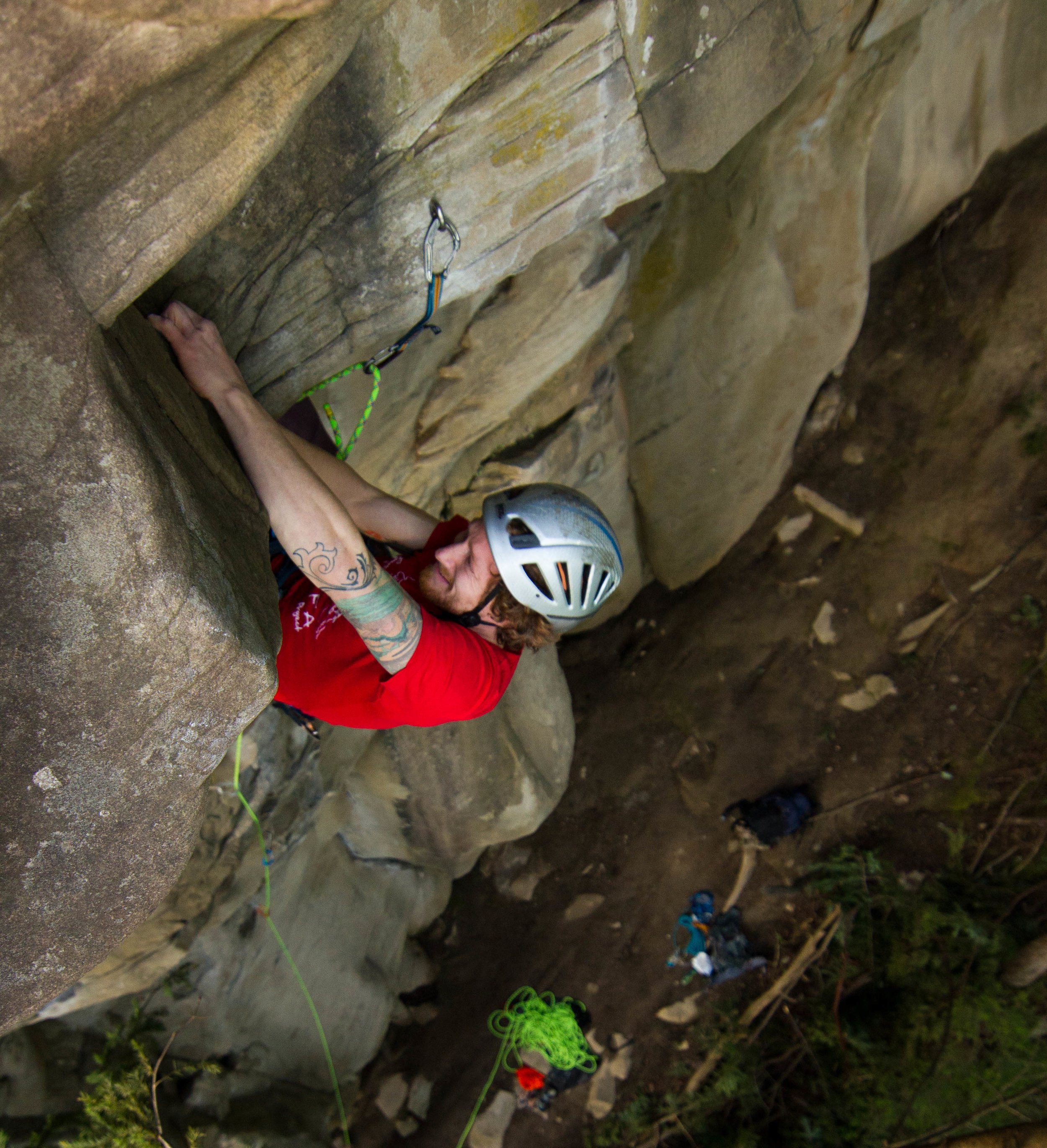The Sandbag Tradition at Devil's Lake
A few months ago, I felt like I was at the top of my climbing game. I on-sighted my first 5.12 trad lead, and had steadily been ticking off long difficult climbs in Washington, Oregon, and Utah. Reaching this level of fitness took years of practice and required overcoming some long-standing mental barriers. Accustomed to warming up on 5.10, trying hard on 5.11, and climbing at my absolute limit on 5.12, I was in for a rude awakening when I decided to spend this summer season guiding and climbing at Devil’s Lake.
Top-roping is the predominant climbing style at Devils Lake, but I have been resisting the call of the TR. I had made a few trips here and top-roped a handful of routes in recent years, but to fully embrace my time here this season, I want to climb everything in a ground-up traditional style. Taking on that challenge, my first day climbing proves to be a memorable one. “Taking it easy” with a warm-up on Vacillation (5.7), I do not expect to wobble or hesitate. But ten feet up the climb I encounter a bulging inside corner and a crack without secure finger or hand holds. As I grunt and squirm to get some protection in, I realized the name may have been a warning.
The common consensus is that new climbers at the Lake should expect to climb two grades below what they climb elsewhere. Really? My doubts about this idea were quickly dispelled. Punching through the middle of the route, and up to a wide and steep crack, Vacillation is not yet over. After a lengthy search, I find some small holds hidden inside the crack and pull myself through the final crux. The fact I can identify multiple “crux” sections on a 5.7 route is very telling. Effectively “warmed up” at this point, my partner and I set our sights on some other classics at Two Pines Buttress.
I had noticed a splitter finger crack on the hike in, and identified it as Congratulations (5.10a). After another spicy “moderate” climb on Chicago (5.8), I felt ready to test myself on Congratulations. It looked like a straightforward crack climb, and having spent so much of the past 5 years climbing finger cracks, I figured it couldn’t possibly be that hard. I rack up, anticipate the first few moves, and start up the route. Part of what makes the climbing at Devils Lake so intimidating is the incredible smoothness of the rock; you expect your feet to slip off at any moment. I pull onto a finger lock and some small but reasonable foot holds, while setting my first piece of protection. I place my right foot on a glassy, sloping hold, but cannot bring myself to stand up on it. I am only five feet up the route… and decide to step back to the ground to regain my composure.
With the first piece in, I feel slightly more relaxed. Moving through the first sequence again, I have no choice but to trust the unnerving right foot hold, and reach as high as possible to a finger lock. I bring my feet into the crack and twist them aggressively, hoping to take some of my weight off my fingers. I am still less than 10 feet off the ground, and not feeling particularly stable. I slam a small cam into the crack, and quickly clip the rope. Sweaty from the heat and stress, I feel my fingers slipping from the constriction above. My belayer sees my tenuous position and braces for a fall, but I am not willing to give into gravity just yet. As my fingers are sliding out, I find just enough grip to pull up, get my toes into another painful foot jam higher up, and throw my hand up into the widening crack. Somehow it sticks.
Racing against the downward pull of gravity, greasy finger locks, and disappointing footholds, I climb into the “no fall zone.” Stopping would result in falling, and falling would bring me crashing to the ground. Adrenaline and sheer will power propel me up another body length to where I can pause and place a cam. I take stock of what just happened, try to control my breathing, and remember this is supposed to be fun.
The rest of the climb is far more reasonable, but I am not ready to celebrate just yet. I notice I am soaked in sweat, my ankles hurt from the unpleasant foot jams, and Liz has been holding her breath and bracing for me to fall onto her head. I work my way up the remaining 40 feet, placing protection here and there, until I reach the top of the cliff and build a quick anchor. I am so impressed by this climb and the challenge of climbing without a clear idea of where the good holds are. I assume I missed something important, because that felt like every bit a 5.11. Regardless of the grade, I found an honest appreciation for the climbing at Devils Lake.
Having trained on the mountains and fjords of Norway, in the harsh desert Southwest, and on granite cliffs across the western US, I believed I was ready to dominate the most notorious of Midwestern climbing areas. The bullet hard purple quartzite of Devils Lake, Wisconsin, however, proves to be indomitable. The climbing is difficult and always has been. It provides an arena where I have to try hard, and will continually be humbled. By letting go of expectations and embracing the unknown, I can experience a piece of what the pioneers were doing when climbing began at Devil’s Lake. I found the authentic traditional experience to be fully engaging, memorable, and downright hard (even with nylon rope, cams, and sticky rubber). Whether you are looking for nail-biting trad leads, luxury top-rope belays while laying in a hammock, or anything in-between, you can find it at Devil's Lake.



